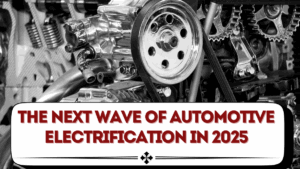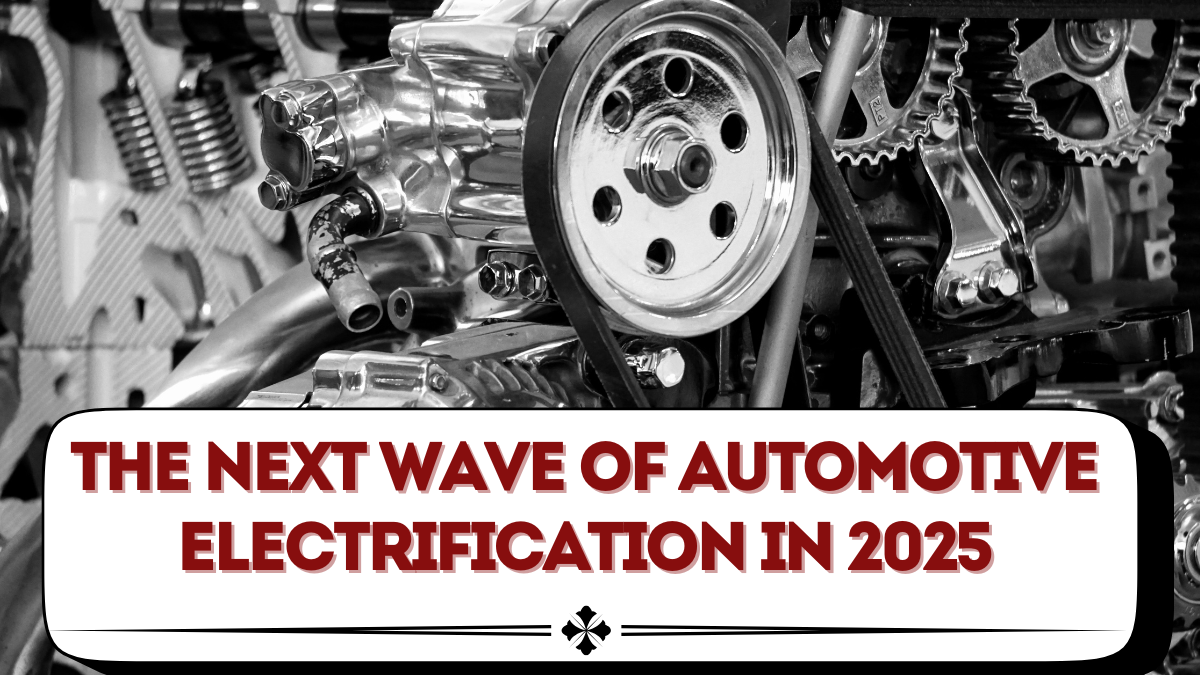The automobile industry is undergoing its most significant transformation in over a century. The rapid adoption of electric vehicles (EVs), coupled with advances in hybrid technologies and charging infrastructure, is reshaping how people buy, drive, and maintain cars. In 2025, automotive electrification trends are not just limited to luxury brands or early adopters. They are becoming mainstream, with every major manufacturer investing heavily in EVs and hybrids.
For consumers, this means more options across price ranges, better charging availability, and vehicles with longer ranges. For the industry, it means unprecedented competition and innovation. This article explores the electrification wave in 2025, the technologies driving it, and what buyers should know before stepping into this new era of mobility.

The Rise of Electric Vehicles in 2025
EV adoption has accelerated rapidly in the past three years, fueled by government incentives, stricter emission laws, and growing consumer awareness about sustainability. In 2025, EVs are expected to account for nearly 20–25% of all new car sales in key markets like the US, Europe, and China. India is also seeing rapid EV adoption, supported by subsidies under schemes like FAME-II and state-level incentives.
Popular models such as the Tesla Model 3, Hyundai Ioniq 6, Tata Nexon EV facelift, and BYD Seal are setting new benchmarks in affordability and range. Manufacturers are also focusing on smaller EVs for city driving, making the shift more accessible to everyday consumers.
Advances in Battery Technology
One of the biggest challenges for EVs has always been battery performance. In 2025, significant improvements are being seen in both lithium-ion and solid-state battery technology. These advancements promise higher energy density, faster charging, and longer lifespans.
Key improvements include:
-
Extended driving ranges exceeding 500–700 km per charge.
-
Fast charging technology reducing charge times to under 20 minutes.
-
Safer battery chemistries with reduced risk of overheating.
-
Recycling initiatives to reuse rare earth materials.
Solid-state batteries are still in early commercial rollout, but they are expected to become a game-changer by the late 2020s.
Hybrid Technology as a Bridge
While full EVs are growing fast, hybrids remain an important transition option for markets with limited charging infrastructure. Plug-in hybrids (PHEVs) and mild hybrids combine fuel efficiency with reduced emissions, making them a practical choice for drivers who still rely on long-distance trips.
In 2025, brands like Toyota, Honda, and Hyundai are releasing new hybrid models that offer 25–30% better fuel efficiency than traditional cars. For many consumers, hybrids provide the perfect balance between reducing their carbon footprint and avoiding range anxiety.
The Growth of Charging Infrastructure
Infrastructure is the backbone of EV adoption. Governments and private players are investing heavily in charging networks to make EV ownership practical. In India, for example, charging stations are now being installed at malls, highways, office complexes, and even residential buildings.
| Charging Type | Average Time | Best Use |
|---|---|---|
| Level 1 (AC) | 8–12 hours | Home charging, overnight use |
| Level 2 (AC) | 3–6 hours | Workplaces, public stations |
| Level 3 DC Fast Charging | 20–40 minutes | Highways, quick top-ups |
| Wireless Charging (Emerging) | Ongoing | Future home and urban solutions |
The next big step is ultra-fast charging networks capable of delivering 300+ kW, allowing EVs to be charged in under 15 minutes. Automakers are also working on vehicle-to-grid (V2G) technology, which allows EVs to send energy back into the power grid.
Challenges in Automotive Electrification
Despite rapid progress, the industry faces challenges that must be addressed for electrification to reach its full potential. These include:
-
High initial purchase costs compared to petrol/diesel cars.
-
Unequal charging infrastructure in rural vs urban areas.
-
Limited battery recycling and disposal facilities.
-
Range anxiety among new EV buyers.
-
Need for upskilling mechanics for EV servicing.
Automakers and governments are actively working on solutions, but widespread adoption will require continuous innovation and support.
Future Outlook for Electrification
By the end of 2025, the automotive landscape will look dramatically different from just five years ago. Electric cars will no longer be niche; they will compete directly with petrol and diesel models in affordability and convenience. With improved batteries, expanding charging networks, and increasing consumer trust, the road ahead for EVs is clear.
Hybrids will continue to play a vital role in bridging the gap, particularly in emerging markets. Meanwhile, futuristic technologies such as wireless charging, hydrogen fuel cells, and AI-powered energy management will shape the next phase of electrification.
FAQs
What percentage of cars will be electric in 2025?
EVs are projected to make up 20–25% of new car sales globally in 2025, with higher penetration in developed markets.
Are EVs cheaper to maintain than petrol cars?
Yes, EVs have fewer moving parts, making them cheaper to maintain. They save on oil changes, exhaust systems, and fuel costs.
How long does it take to charge an EV in 2025?
With fast-charging stations, most EVs can reach 80% charge in under 20 minutes, while home charging still takes several hours.
Will hybrids still be relevant in 2025?
Absolutely, hybrids provide a practical option for markets where charging infrastructure is limited and for drivers worried about range anxiety.
What is the future of EV batteries?
The industry is moving toward solid-state batteries, which promise faster charging, higher capacity, and improved safety.
Conclusion
The automotive electrification trends of 2025 highlight a future where electric mobility is no longer experimental but mainstream. With better batteries, smarter charging, and expanding EV models across every budget, the auto industry is firmly on the path toward sustainability. Although challenges like cost and infrastructure remain, the progress being made is undeniable. For buyers, 2025 is an exciting year to embrace electric or hybrid vehicles, knowing that they are part of a cleaner, smarter, and more advanced driving experience.
Click here to know more.
